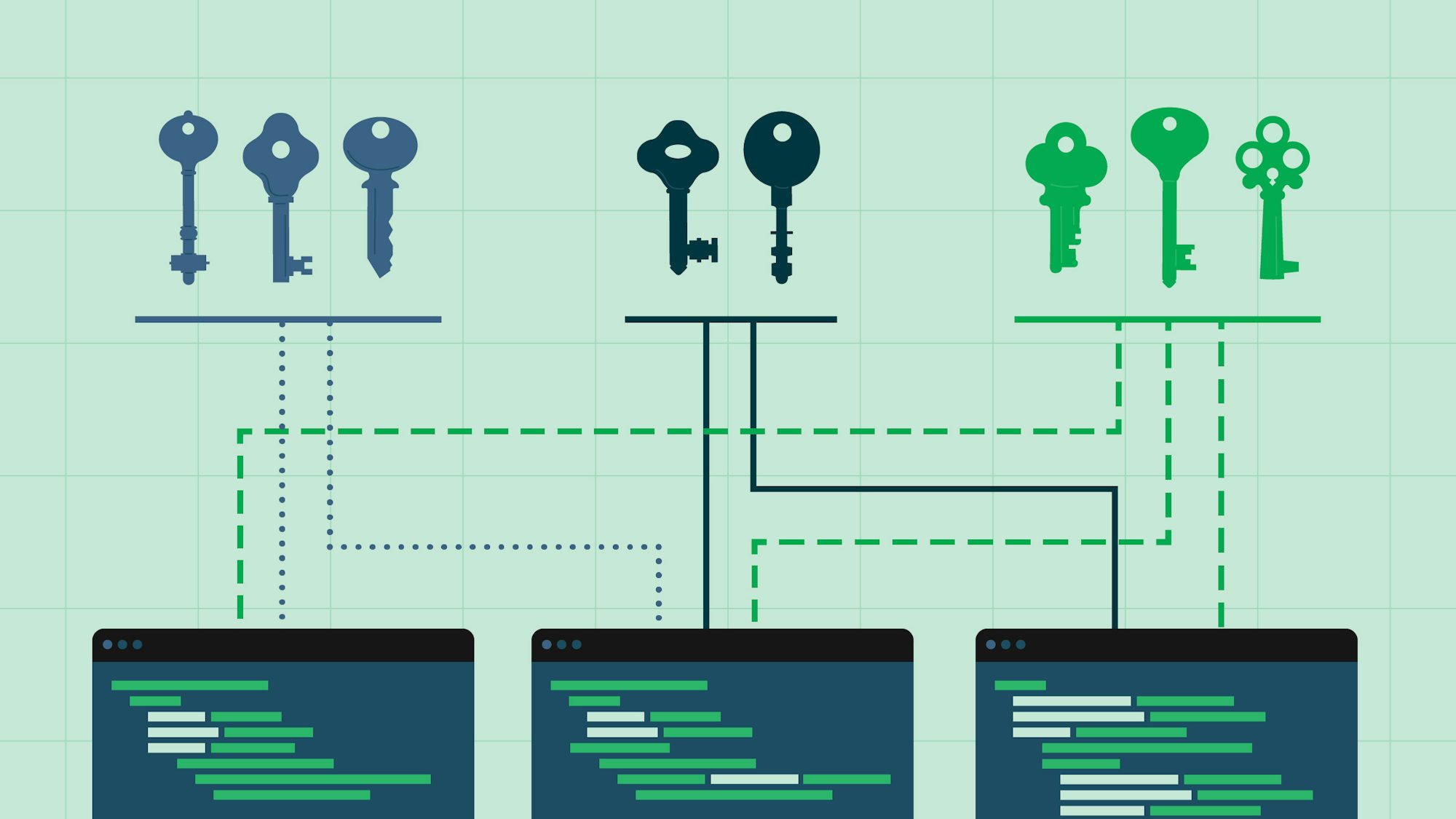What is platform engineering? A quick introduction

Senior Technical Content Marketing Manager

Platform engineering is a discipline focused on designing and maintaining a unified technology platform to support the needs of diverse development and operations teams.
This approach has quickly gained popularity as a strategy for improving the efficiency and scalability of software development. But what does it involve, and how can you know if your organization is ready to implement it?
In this blog post, we’ll delve into the core components of platform engineering, why it brings value to software organizations, and how you can assess your readiness to adopt this transformative approach.
What is platform engineering?
Platform engineering is an emerging discipline that seeks to improve developer experience and operational efficiency by reducing the complexity of modern software delivery. By standardizing workflows and processes, it addresses key challenges in large-scale DevOps implementations, such as aligning development with business goals and managing complex toolchains across the application lifecycle.
Platform engineering teams automate infrastructure management and enable developers to self-serve reliable tools and workflows from a centrally managed technology platform. By reducing cognitive load on development teams, platform engineering enables teams to focus on innovation and delivery, ensuring smoother, faster, and more reliable software production.

The value of platform engineering
Platform engineering benefits software organizations by reducing operational complexity and removing friction from the development process. It provides a stable alternative to the chaos and inefficiency that the you build it, you run it mindset can bring to teams building large-scale distributed applications in the cloud.
Read more: The Path to Platform Engineering
The work of platform engineering teams shows up in four key areas:
- Building Internal Developer Platforms
- Standardizing and securing key delivery processes
- Setting and maintaining internal service level agreements
- Monitoring team performance metrics
Let’s take a closer look at these features of platform engineering and the value they bring to the development process.
Internal Developer Platforms (IDPs)
One of the most important roles of the platform engineering team is to build and maintain an Internal Developer Platform (IDP), which is a central collection of tools, services, and automated workflows that support rapid development and delivery of software products across the organization. IDPs provide a service layer that abstracts the complexities of application configuration and infrastructure management.
Importantly, IDPs allow developers to self-serve the resources they need to rapidly build, test, deploy, and monitor applications with minimal friction. Instead of having to wait for operational teams to provision infrastructure or resolve tickets, developers can easily spin up cloud environments, trigger CI/CD pipelines for automated tests and deployments, implement rollbacks, access logs and build artifacts, and more from a single API or GUI.
Standardizing and securing processes
Platform engineering gives organizations a unified system to manage, standardize, and scale typical DevOps processes and workflows. By vetting and curating a catalog of resources, platform teams create “paved roads” that make common development tasks easier while also leaving developer room to use their own preferred tools when necessary.
In large organizations with hundreds or thousands of developers, too much autonomy can result in tool sprawl, knowledge silos, runaway costs, and burnout. Paved roads offer a proven, reliable pathway to delivery that reduces the knowledge burden on development teams and allows the organization to enforce stronger security, compliance, and budget controls.
Setting internal service level agreements (SLAs)
Platform teams treat IDPs as their product and developers as their customers. To increase adoption of the IDP, they set high expectations for the reliability and performance of the IDP and hold themselves accountable through service level agreements.
Maintaining a stable and secure internal platform is a critical part of the platform engineer’s job. A failure of internal systems not only makes it less likely that developers will follow the paved road to production, but it can also cause interruptions in the flow of value to external customers. Platform teams actively monitor the health and performance of the IDP to ensure developers stay productive and the organization’s customers stay happy.
Monitoring key performance metrics
Platform teams track important engineering performance metrics like throughput, workflow durations, and incident recovery times to eliminate bottlenecks and tailor the platform to the needs of developers. If recovery times start to exceed the baseline, for example, platform teams may look optimize automated tests, enhance monitoring and alerting capabilities, or adjust infrastructure resources to improve performance.
Read more: CI/CD Metrics for Platform Engineers
By tracking data around developer productivity and performance, platform teams can ensure that the IDP properly supports the organization’s development patterns and business goals.
Do I need a platform team?
Determining whether your organization needs a platform team involves assessing various aspects of your development processes, team dynamics, and overall business goals. Here are some key considerations to help you decide.
Project complexity and scale
Diverse technologies and services: If your organization uses a wide array of technologies and services that require integration and consistent management, a platform team can provide the necessary expertise and oversight.
Multiple development and deployment environments: Companies that maintain several development and deployment environments might find that a platform team can effectively harmonize these operations, ensuring consistency and reliability across all platforms.
Organizational needs
Scale and growth trajectory: As organizations grow, the scale of operations often leads to increased complexity in infrastructure and software deployment. A platform team can manage this complexity, allowing other teams to focus on their core responsibilities without being overwhelmed by the backend requirements.
Frequency of deployments: If your deployment frequency is high, and each deployment demands significant preparation and follow-up, a platform team can specialize in refining these processes to increase efficiency and reduce downtime.
Current challenges and pain points
Resource management inefficiencies: If your teams consistently struggle with resource allocation, access to development tools, or operational bottlenecks, a platform team can address these issues by implementing more effective systems and procedures.
Integration challenges: Organizations that frequently integrate new tools or technologies can benefit from a platform team that specializes in ensuring these integrations are smooth and do not disrupt existing workflows.
Strategic goals
Innovation and market responsiveness: A platform team can accelerate innovation by managing the day-to-day technical complexities, allowing the product teams to focus on developing new features and responding to market needs.
Standardization across departments: For companies with multiple tech teams, a platform team can standardize workflows and tools across departments, strengthening collaboration and reducing friction.
When you might not need a platform team
Small scale operations: Smaller organizations or startups with limited complexity might not require a platform team. In such cases, the investment in a specialized team might not justify the benefits, as fewer systems and a smaller scale can be managed effectively by existing teams.
Early development stage: Companies in the early stages of their product development might need to prioritize flexibility and rapid iteration over the structure and standardization that a platform team provides.
Deciding to establish a platform team involves a careful assessment of your current and future technological needs, organizational pain points, and strategic goals. If the complexity of your operations starts to hinder rather than help your growth, it might be time to consider a platform team to centralize and harmonize these efforts, allowing your organization to focus on what it does best.
Platform engineering with CI/CD
Robust CI/CD is a critical part of any platform team’s toolchain. It provides an automation engine that can trigger templatized workflows to build, test, and deploy code in response to a range of events, from a code push to a change in an upstream library. At an even higher level, a mature CI/CD pipeline can serve as a control plane for codifying, enforcing, and measuring business priorities in development.
CircleCI provides the tools platform teams need to build governed, scalable pipelines that balance consistency with flexibility.
Platform engineers can define shared standards using centralized config files, making best practices easy to adopt across projects. For teams that need customization, config overrides and allowlists provide safe, structured flexibility without losing control.
To automate platform operations at scale, CircleCI offers infrastructure-as-code tools like a custom Terraform provider and project administration APIs. These features allow platform teams to manage pipeline setup, secrets, and permissions programmatically across hundreds of services.
Combined with optional policy enforcement and reusable components like orbs, CircleCI’s platform tooling helps teams move faster with confidence, giving developers paved paths while maintaining organizational standards.
CI/CD saves developers time and improves the development process. It forms the core of a platform engineering toolkit that enables self-service, reusability, and other key principles of platform engineering methodologies.
Conclusion
Platform engineering is a powerful tool for scaling up software delivery processes without sacrificing quality, security, or efficiency. By simplifying and automating resource provisioning and management, it empowers developers to ship more value to customers in less time.
Organizations can use platform teams to unlock and scale up the benefits of DevOps, augmenting developer agility with organizational reliability, visibility, and confidence. If you are ready to improve your organization’s performance with platform engineering, start by signing up for a free CircleCI account. Then check out the platform team toolkit to see how best-in-class CI/CD can help you add both speed and quality to your development cycles.



